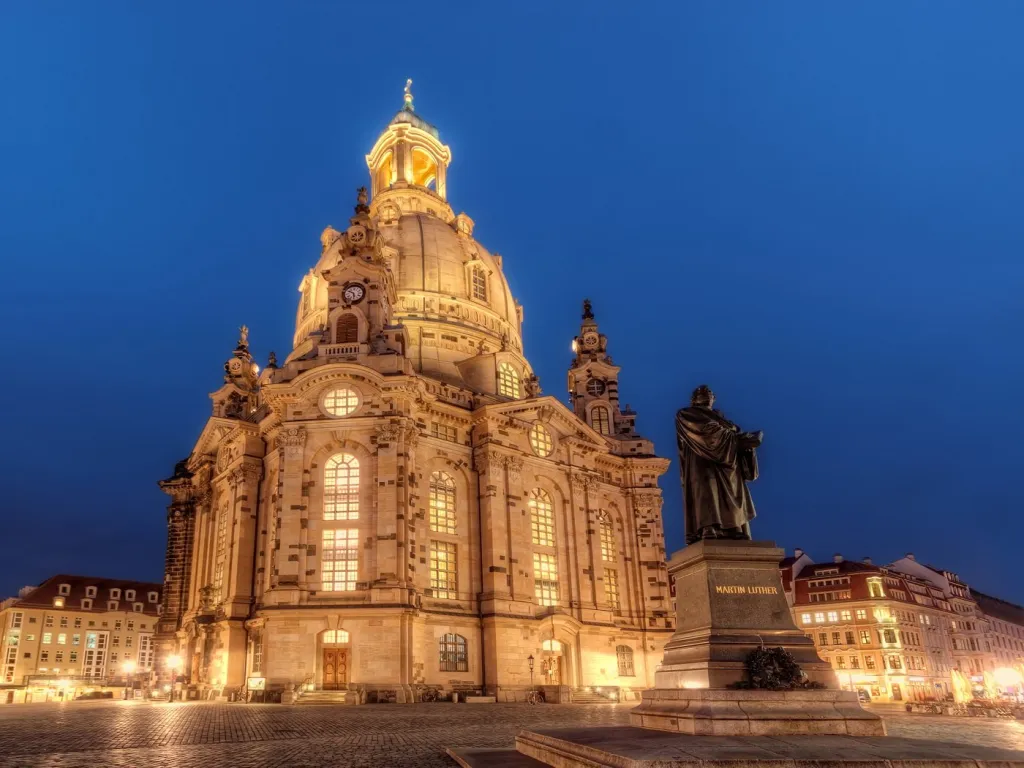A new generation of guides for Dresden Frauenkirche

The project
With more than two million visitors each year, the Dresden Frauenkirche is one of the most visited historic sites in all Germany. Smartify has collaborated with the Frauenkirche Foundation to create a new audio guide, enabling object recognition across the spaces, and curated a four-minute contemplative soundscape for visitors to listen to as they sit in the space.
What makes it special?
A spectacular Baroque building, the silhouette of its dome was the centrepoint of one of Europe’s most beautiful cityscapes, as immortalised by Canaletto. The complete destruction of the Frauenkirche during the Second World War remains a highly sensitive and controversial subject, even to this day. The faithful reconstruction of the Church, as a symbol of peace, hope and reconciliation, delivers that core message at the heart of any visit.
What was the challenge?
The Frauenkirche was not getting value for money for its old device-based audio guide operation, and had decided to discontinue it. However, an audio guide was still highly desirable to engage visitors with the mission and values of the Frauenkirche. A bring your own device (BYOD) solution would represent better value for money and less maintenance cost.
Additionally, the team aimed to transform the visitor experience from essentially a passive experience as visitors pass through the spaces of the Upper and Lower Churches, to a proactive engagement with the mission of the Church as a place of peace, hope and reconciliation.
What was the solution?
- A completely new approach to audio guides: Smartify collaborated closely with the Foundation team to ideate a completely new approach to audio guides for historic sites in Germany. Whilst still placing the curatorial knowledge at the heart of the experience, an approach was pioneered that was dedicated to being relaxed and informal - for example, addressing the visitor with the informal ‘Du’ instead of ‘Sie’ in German. Discussion and exploration about tone and approach settled on the idea of explaining the spaces and places as if ‘into the face of a smiling child’.
- Image and object recognition: Smartify mapped the awe-inspiring frescoes of the inner dome, as well as all the key features and objects across the interior space, making them accessible via image and object recognition, empowering visitors with exciting and meaningful ways for them to individually explore the Church and learn about the liturgical function of the church.
- Soundscape: With the generous supply of archive recordings of music performed in the church, Smartify produced rich tracks for the audio guides, but also compiled a four-minute soundscape. Visitors can take time out of the tour, find a quiet space under the dome and be transported through immersive sound. This provides the opportunity to pause, reflect and contemplate on the beauty of the reconstruction and its message of hope.
- Custom web app: The custom web app makes accessing the experience as easy as possible. Visitors do not even need WiFi access, but can use their own cell phone connectivity to access all the experiences in just one or two seconds. The custom web app even works in the Lower Church, where the spaces are underground and girded by thick walls of sandstone.